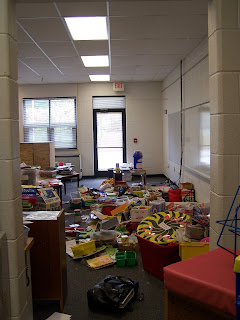I know I briefly mentioned PYP portfolios in my student-led conference post, but I wanted to elaborate a little bit more on those.
First of all, whether you are a PYP school or not your students should have some type of portfolio to display their work over time. Many teachers keep student writing pieces throughout the year so that they can show parents at conferences and students can see their own growth. I know our middle school (which does not use the IB curriculum) uses online portfolios and this is a huge part to their student-led conferences.
What I like about the portfolios is it allows students to visually see that they have learned a ton over the course of a year and even parents can say "hey, my kid has learned something this year!"
What is unique about the PYP portfolios is that there are artifacts from each unit that get stored in this binder. The artifacts we choose to put in at our school is their summative project (or picture of it) and a reflection about what they learned from completing that project as well as an activity that the student completed during the unit and a reflection about what they learned from completing that activity. The second set of artifacts are what we call 'student-pick' reflections.
From kindergarten all the way through fourth grade (at our school elementary ends in fourth) students collect artifacts from each of the six themes that are covered each year in the PYP programme. So not only are students seeing what they learned and how they grew throughout the school year, but they are also can see how what they learned in kindergarten in the theme 'Who We Are' connects to what they learned in first, second, third and fourth grade. Amazing!
I encourage you to start incorporating portfolios into your classroom. Students will never be allowed to say "I didn't learn anything this year" ever again!




















